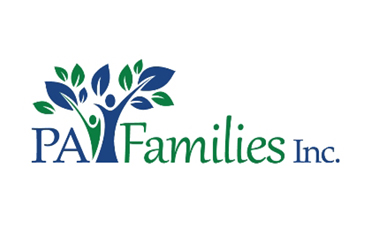Engaging Youth in a System of Care
Youth involvement is necessary to truly meet the needs of youth and families in a system of care. As consumers of services, youth are central to their own recovery and well-being. Involving youth enhances their development and assists in their successful transition to adulthood. Additionally, youth engagement improves the effectiveness of programs and services. As young people feel greater control over their lives, they are less likely to engage in risky behaviors and more likely to positively engage in positive relationships—at home, at school, and in their communities.
This work requires a commitment at every level to the values around youth involvement to engage and empower youth with lived experience, but everyone—including families, adults, system partners, and the wider community—benefits.
- Families will see their child or sibling become resilient and strengths-based as s/he evolves into a leader and advocate.
- Adults who witness the competence and confidence of young people will come to view youth as legitimate and essential contributors to decision-making. Adults will also become more confident in their own ability to work with youth.
- Partner systems and organizations will discover a renewed clarity and commitment to their own work.
- Policymakers will develop a stronger understanding of the challenges faced by youth in multi-systems and how they might be better served.
- The wider community will benefit from an improved understanding of youth and their challenges, reducing the stigma often associated with young people in systems.
Making room for youth at your table means more than inviting them to a meeting. It means engaging in a genuine dialogue in which system partners listen—fully—to their perspective and respond in meaningful ways. This work is not necessarily easy or intuitive, especially within systems whose function is to respond reactively—not proactively—to the challenges facing youth.
There is often a gap in understanding between youth and adults, but everyone—regardless of age or culture—has valuable wisdom. This diversity, when respected, will strengthen your work, and a critical first step may need to include a shift in the way youth are perceived, illustrated in this table:
| View of Youth Involvement | Outcome | Steps on the Ladder |
|---|---|---|
|
Youth as Objects Adults know what is best for young people. |
Involves youth in adult-controlled situations at the discretion of adults. Young people’s contributions are insignificant and underutilized. Young people maintain a powerless position. |
|
|
Youth as Recipients Adults view youth participation as an experience that will be good for them |
Creates an opportunity for young people to learn from the adult experts, which will help them when they become adult contributors. |
|
|
Youth as Partners Adults view youth as important contributors. |
Encourages youth to become involved in all aspects of the organization, group, or project. Youth and adults share power and are equal partners in decision-making. Both bring strengths, abilities, and expertise to the table. The system of care is youth-guided. |
|
Source: “Youth Involvement in Systems of Care: A Guide to Empowerment” published by American Institutes of Research, 2005.
Tips for recruiting youth:
- If possible, engage a Youth Coordinator with lived experience for your county’s work. The role of a Youth Coordinator is to offer support, encouragement, and guidance to the youth you recruit. This role can build a bridge between youth and adults and serve as an advocate for authentic youth involvement. While s/he supports all efforts to help youth take the lead in system of care activities, the coordinator will be key to assisting with youth-related activities and events (e.g.: legislative advocacy days, local youth conferences).
- While it can be a challenge to find and retain interested youth, you may find willing young people through partner organizations, schools, providers, or recommendations.
- Youth—like anyone—are more likely to commit their time and energy to this work if they are able to see it as meaningful. You can help by framing their participation as an empowering opportunity to improve the systems with which they’re familiar. Here are other ways you can also make youth feel welcome:
- Do as much as possible to hold meetings at times that youth will be available without having to miss school or work.
- Be sure that any information you share is easily understood and free of the professional jargon often associated with this work.
- Ask for input on policy recommendations and priorities.
- Offer training and resources that build the skills that will make youth effective leaders and advocates.
- Promote collaboration between youth- and family-serving organizations.
- Ensure that youth cultures are embraced and respected by everyone around your table.
- Invite youth to take a leadership role in activities that they believe will be of value to other youth in your county (e.g.: teen summit to reduce mental health stigma, Mental Health Awareness Day events, advocacy training)
- Invite youth to develop and guide communication activities to reach other area youth.
Adults—even parents and professionals in the field—are not always certain how to engage youth in a genuine way. The American Academy of Child & Adolescent Psychiatry’s Youth Voice Tip Sheet (linked in the Resources section of this toolkit), offers concrete steps to move you in the right direction. Here are just a few of the adapted guidelines that can ensure youth are sincerely heard and respected:
- Learn how to talk to youth—and get to know them as people. Learn their names and their stories. Ask questions and listen for the answers.
- Learn about youth culture. This includes religion, ethnicity, race, and gender, but it also includes preferences for communication (e.g., social media).
- Listen to youth because they do not typically feel heard. Youth may not always say what we want to hear, and adults would do well to listen without judgment. Trust takes time and patience to grow.
- Provide the right information. Information is power, but that information must be jargon-free and easily understood so that youth are empowered to participate in the decisions that impact their treatment and lives.
- Accept that youth may be afraid, frustrated, and angry. No one wants to live with mental health challenges. No one wants to feel different. No one wants to fear rejection.
- Treat youth the way you would want your own child treated. Youth are more than their diagnosis. Help them learn the skills to thrive.
Engaging youth is critical to creating a true system of care, but there are often barriers. This table illustrates common barriers and possible solutions to youth engagement:
| Barriers to Youth Involvement | Solutions to Youth Involvement |
|---|---|
| Youth have ideas but don’t know how to implement them. | Provide training for adults who will partner with young people. |
| Adults refuse to share power with young people. | Educate adults about the power and benefits of involving youth. |
| Adults plan projects without involving youth | Provide training for adults who will partner with young people. |
| Adults view young people as problems rather than resources | Create opportunities for youth to train adults and providers. |
| Youth don’t view themselves as change agents. | Listen to and value the suggestions of young people, so they become more comfortable and confident when making suggestions. |
| Youth are unwilling to get involved (because they have never been invited to the table before). | Use youth leaders to connect with other youth in the community. |
| Lack of support for young people when they come to the table. | Identify an adult mentor for youth to help in understanding meeting processes and protocols. |
| Distrust between youth and adults | Facilitate ice breakers, discussions, or other activities where youth and adults can learn about each other. |
| Lack of transportation to meetings. | Help youth decide how they will get to the meeting (e.g. provide bus tokens if youth use public transportation or schedule a carpool). |
| Scheduling of meetings. | Schedule meetings after school and provide food if the meeting is during a meal. |
| Financial constraints. | Provide compensation for youth involvement (cash, vouchers, credits, community service hours). |
| Cultural differences. | Provide cultural competency training that includes youth. As youth to educate others about their own culture. |
You’ll know you’ve truly succeeded in authentically engaging youth when:
- System partners value and seek the input of youth voice.
- Youth are decision-makers, advocates, and educators.
- Youth are able to participate fully in meetings.
For assistance in engaging youth in your county System of Care, contact the PA Care Partnership for technical assistance and support. Please see the Additional Resources and Appendix H in the System of Care Toolkit for Implementation for links to more comprehensive resources that can help
PA CRISIS TEXT LINE







